 On November 3, 1957, a tiny capsule rocketed into space. Inside was a diminutive, 14-pound, black and white dog named Laika. And when her spaceship pierced the Earth’s atmosphere, she became the first creature in history to make it to outer space. No small feat for a stray that only days before had been fighting for scraps on the streets of Moscow! Laika’s unlikely journey was borne out of the race to prove that human spaceflight was possible. Just a month earlier, on October 4, 1957, the Soviet Union—Cold War nemesis of the United States—launched into orbit history’s first satellite, Sputnik 1. That’s when Soviet Premier Nikita Khrushchev insisted that his scientists perform a second test—this time to determine if a living being could survive the journey to the stars. The mission was too dangerous to risk a human life, so the Soviets decided to train a stray dog to be Russia’s first cosmonaut. Nine days before the scheduled launch, they chose Laika for her gentle disposition and natural beauty. If she was to make history, they reasoned, she would need to be photogenic. Laika did make history. Monitors followed the sound of her tiny beating heart all the way into Earth’s orbit. But there was a problem: the Soviets had not worked out how to get Laika back. She perished, circling the earth, most likely from the profound heat created by the capsule’s firing rockets. Laika’s journey sparked not one but two historic advances: the era of human space exploration, and the animal rights movement, particularly in scientific testing. She became a global folk hero. Her sacrifice inspired poems and novels. She was featured on stamps and coins, and memorialized in a Moscow statue. Her fame ensured that going forward efforts would be made to protect the lives of canine cosmonauts. Sure enough, on August 19, 1960, two more Moscow strays, Belka and Strelka, became the first living creatures to make the round trip to space. Laika the Soviet Space Dog will always be remembered as the first living being to boldly go where no one had gone before. Laika was a pioneer for humanity.  Sarah Towle is an award-winning digital storyteller of immersive tales for educational tourism. With her latest project for secondary school students—the History Hero BLAST—she puts the Story back in History, bringing a fictional flair to factual tales of inspirational figures from around the world and throughout time. A blog and future podcast, the HHBLAST welcomes the participation of published and aspiring authors, including young writers. Click here to find out more about how to bring the HHBLAST—and Sarah—to your school!
0 Comments
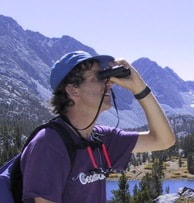 A light year is not a year that has gone on a diet. It is not a year that’s been trimmed to 300 days. It’s not a year spent under high-wattage lamps. A light year isn’t any kind of year. A light year is a distance. It is a vast distance; the distance light travels in a year. To appreciate a light year, you have to understand how fast light travels. The speed of light is truly mind-boggling: 186,000 miles per . . . second. That’s “per second,” not “per hour.” In one tick-tock second, light travels a distance of 186,000 miles. If it could go in circles, it could travel around the earth more than seven times in just one second! But light travels in straight lines, not in circles. Imagine something traveling that fast in a straight line—not for a second, not for a minute, not for an hour, not for a day, but for an entire year. The distance it goes in that year is called a light year. A light year is a convenient unit of measure when distances are enormous. You could talk about the same distances in miles. It's about 5,878,499,810,000 (5 trillion, 878 billion, 499 million, 810 thousand ) of them. But these measurements are so large that they are unwieldy. It's much easier to just name that enormous distance with two simple words: a "light year." The star closest to our solar system is Proxima Centauri. Some of the light that leaves Proxima Centauri goes to Earth, cruising along at 186,000 miles per second. At that speed, light takes about 4.2 years to get to Earth from Proxima Centauri So how far away is Proxima Centauri? It is 4.2 light years away. To give you an idea of how far that is, imagine going to Proxima Centauri in a spaceship traveling at the speed of the space shuttle — about ten miles per second. (That’s much faster than airplanes can fly.) You would get there in about 70,000 years. Our Sun is much closer than Proxima Centauri. It is 93 million miles away. There is another way to refer to the distance from the earth to the Sun. Light leaving the Sun takes about eight minutes to get to Earth, so we say the Sun is eight “light minutes” away. If you traveled at the speed of light, you could get there in eight minutes. Have a nice trip!  David Schwartz has been fascinated by big numbers and big distances ever since he was a little boy riding his bicycle, wondering “How long would it take for me to ride to Proxima Centauri, 4.2 light years away?” He wrote about light years in his math alphabet book G Is for Googol. David is a member of iNK’s Authors on Call. He can visit in your classroom via interactive video conferencing. Learn more here.
No one wants to mess with someone who is super strong! Even if you’re undersized, especially if you’re undersized, you’ve got to try the two tricks in this Minute .
Here’s the first challenge: Bet another person can’t remove your hand from the top of your head. The challenge-taker must try to remove your hand according to your rules. Otherwise, it’s cheating. Sit on the floor. Place your hand with your fingers spread apart firmly on the top of your head. Have your friend grasp your lower arm next to your elbow. Now let him/her pull upward, trying to lift your hand from the top of your head. Chances are excellent that you’ll be lifted off the ground before your palm parts from its perch. Why is this so? If you’ve studied simple machines you may have learned about a mechanical advantage. That’s how a simple machine such as a lever can multiply your strength or speed. In this case, you’re putting your friend at a mechanical disadvantage. Your arm is a lever. In order to move your hand from the top of your head, you need an upward force near your hand. If that force is delivered as far away from your hand as possible, it loses its power. It’s easy to remove your hand if you deliver an upward force near your wrist. But at your elbow? No way! Got it? Here’s another trick with the secret sauce of physics. Bet you can keep ten people from shoving you into a wall. Place your hands against a wall with your fingers spread and your arms outstretched. Have ten people line up behind you, hands on the shoulders of the person in front of them. At the count of three, have everyone push on the person in front of them as hard as they can. I mean, really lean in. You, hero of the day, can hold them all off and not bend your elbows. Why? Actually, each person absorbs the force of the person behind them so that you are not experiencing the cumulative force of ten people, only the force of the person directly behind you. So pick someone smaller than you to be that first person. If you’re not super strong, you can still be super smart. If you don’t want to try this yourself, look at my videos of other people doing the challenges. Maybe you’ll change your mind. 
If you like these bets, check out Vicki Cobb’s new release of We Dare You! You might want to join her We Dare You! National Video Project and make more videos yourself from her book. Learn more about it here. Vicki Cobb is a member of iNK’s Authors on Call. You can invite her to your class through the magic of videoconferencing. Learn more about it here. The onset of spring, summer, fall, and winter every year is precisely measured, depending on the sun’s position. But there’s no similar astronomical or scientific reason for celebrating New Years on January 1. Many people don’t. The Chinese New Year occurs on the second new moon after the winter solstice, between late January and mid-February. Muslims mark the occasion on the first day of Muharram, the first month of the Islamic calendar. That calendar is based on the lunar cycle, 11 or 12 days shorter than the solar calendar. So their New Year comes a little earlier every year. Rosh Hashanah, the start of the Jewish New Year, is a two-day observance that begins 163 days after Passover and varies between September 5 and October 5. Unlike other New Year’s celebrations, Rosh Hashanah is holy, a time for piety rather than parties. There was just as much variation in ancient times. In Babylon, the first new moon after the vernal equinox marked the New Year. Egyptians celebrated it in early August, when the annual Nile River flooding began. In Greece, Athens and Sparta couldn’t get along, so their respective new years didn’t occur at the same time. In Athens, it was the first new moon after the summer solstice, while the Spartans waited until early fall. So how did January 1 become the most widely accepted start of the New Year? The answer: Julius Caesar. For centuries, the Roman calendar was in a state of chaos, with the number of days in the year fluctuating widely. In 46 BCE, Caesar worked with the brightest Egyptian astronomers to retool the calendar. He wanted the year to begin on the first of January, a month named after the god Janus. Janus had two faces: one looking backward (at the year just ending) and the other facing forward. For the Romans, it was party time! Caesar didn’t stick around very long after his innovation. On the Ides of March—March 15, 44 BCE—he went to the Roman Senate as usual. While one senator distracted him, others swarmed around him with knives they’d hidden inside their togas, hacking and gashing. He collapsed and died. His calendar proved more durable. When Roman legions conquered new territories, the natives had to adopt the Roman calendar. Every day, especially at the start of the new year, it was a reminder of Roman power.  When we think of endangered species, we are likely to think “cheetah” or “grizzly bear” or some other big, familiar, and in-the-news animal. But unfortunately, just about any sort of living thing can enter the list of endangered life. Scientists fear that the continuing elimination of habitat by humans and the changing climate could result in the loss of a million or more species in the foreseeable future. The Torrey pine, native to the coast of southern California, is on the endangered list. Before the city of San Diego and its suburbs developed, woodlands featuring this species thrived along the nearby rocky coast. The frequent cool afternoon fog helped the trees tolerate a climate where rain is scarce during the summer months. Now, largely because of human development, this beautiful tree with open, spreading branches is critically endangered. There are just two areas left where these trees grow in the wild. Fewer than 5,000 individual trees live on tiny Santa Rosa Island off the Santa Barbara coast and in the Torrey Pines State Reserve on the San Diego coastline. In addition to having an ever-shrinking natural habitat, the Torrey Pines have recently struggled to survive an onslaught of the five-spined engraver beetle, which bores through the bark and lays its eggs in the cambium layer of the tree. The beetle attack can result in shutting off the supply of water and nutrients to the tree, killing it. Healthy trees may be able to survive, but drought can weaken a tree, making it vulnerable to attack. Torrey pines do not replenish themselves easily. They take their time to produce seeds. The male flowers develop in February as clusters of reddish finger-like structures on lower branches. Their pollen fertilizes the female blossoms, which look like tiny red cones. It takes about 3 ½ years for the cones to grow and the seeds to develop fully. Then the cones release seeds, but some may remain until the cone itself drops from the tree as long as ten years after pollination. The Torrey Pines State Reserve works hard to protect these rare trees, but it may be too late. The increasing heat and dryness brought about by climate change could weaken the remaining wild trees, resulting in beetle damage and early death. Let’s hope these hardy beauties find a way to survive these difficult challenges. 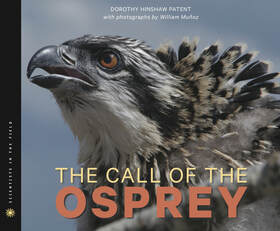 In The Call of the Osprey, Dorothy Hinshaw Patent's engrossing narrative nonfiction and William Muñoz's dramatic photos offer a stunning exploration of the mercury pollution in Montana that causes harm to humans and ospreys alike. "Patent's lucid prose and Muñoz's clear color photos work together to document the efforts of the Montana Osprey Project... An exciting addition to a stellar series." —School Library Journal 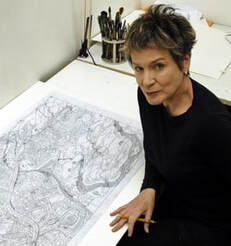 The great Paris tower was underway. From each corner of a broad base the size of a football field, four spidery iron structures rose, curving inward in one majestic sweep toward the middle. The construction – a web of connecting girders – called for 300 workers to assemble some 15,000 pieces of iron and snap 2.5 million rivets into place. This would be the world’s tallest man-made structure, reaching a height of 300 meters (934 feet). A glorious demonstration of engineering, it was conceived by Gustave Eiffel, the most illustrious engineer of nineteenth-century France. The tower was to be the focal point of the International Exhibition of Paris in 1889, commemorating the 100th birthday of the French Revolution. After that, since it had no practical use, it was to be torn down. It took two years, two months, and three days to build the Eiffel Tower. Eiffel used wrought iron, which was a relatively new building material at the time, used primarily for bridges and aqueducts. As the tower rose, becoming the city’s most prominent feature, not everyone approved. “Useless and monstrous,” one newspaper called it. Another described it as an “odious column of bolted metal.” Called the Magician of Iron, Eiffel’s mathematical prowess and attention to detail was legendary. To put the tower project on paper took 30 draftsmen working full time for 18 months. Every rivet of the 2.5 million needed for the structure had its designated place, down to a fraction of a millimeter. The Tower became the hit of the International Exhibition, with nearly two million people visiting it. Still, not everyone loved this prodigious web of steel girders. A famous writer was once asked why he ate lunch there every day, since he was known to hate the sight of it. He replied, “Because it’s the only place in Paris where I can’t see the damn thing.” So why wasn’t the Eiffel Tower torn down? It almost was. What saved it was the radio broadcasting center and the weather station that Eiffel installed at the top. Now France’s most famous landmark, it is not the only national symbol that Eiffel was involved with. He also built the iron skeleton of a lady we’re all familiar with: The Statue of Liberty. As for the Eiffel Tower, “I ought to be jealous of that tower,” he once said. “She is more famous than I am.” Eiffel's most famous works are still major tourist attractions in the 21st century. The Eiffel Tower is the most-visited paid monument in the world. An average of 25,000 people ascend the tower every day. Approximately four million people visit New York's Statue of Liberty National Monument and Ellis Island each year. Photo Benh Lieu Song viia Wikimedia Commons. Art by Roxie Munro MLA 8 Citation Munro, Roxie. "The Magician of Iron." Nonfiction Minute, iNK Think Tank, 7 Mar. 2018, www.nonfictionminute.org/the-nonfiction-minute/The-Magician-of-Iron.  One of Roxie's most recent, Masterpiece Mix, is a book about art. As an artist searches for inspiration, she explores thirty-seven paintings of different genres, and comes up with a grand finale, using all of them. The book has "smart, concise, marvelously amplifying backmatter" (Kirkus), a dedicated web page, and free downloads. 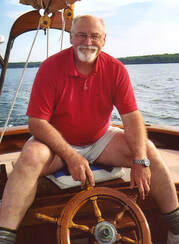
Where am I? This was a cruel question for sailors before John Harrison.
In 1707 a fleet of British warships mistook their location and sailed onto the rocky Scilly Islands. Two thousand men drowned. The Royal Navy offered a prize of £20,000 (3 to 4 million dollars in today’s money) for anyone who could provide a way for ships to find their position. North and south latitude wasn’t the problem. Tables gave the positions of the sun, moon and stars above or below the equator. Navigators could use a sextant (it measures angles between the ocean horizon and a celestial body) to find a ship’s position north or south. But the only way of knowing your position on the spinning earth, east or west, is to know what time it is, within seconds, at the Royal Observatory at Greenwich, England—0° longitude. Sailors needed a seagoing clock! Clocks in the 1700’s were slow or fast by several minutes a week. Not good enough. And they measured seconds with a pendulum, which wouldn’t work on a rocking, rolling ship. John Harrison was a fine carpenter who became fascinated by accurate timekeeping. He built big clocks for houses, barns and churches. Bit by bit he made them more accurate. He set out to win the longitude prize. He invented ways for a clock to compensate for temperature, so they wouldn’t run slower when it got warmer. He invented a nearly frictionless escapement (the mechanism that “counts” the tick-tocks with the clock’s hands). He overcame the pendulum problem with pivoted “dumbells” that rocked back and forth with springs. Harrison worked for five years to construct the large and beautiful Sea Clock #1. In 1736 Harrison and his clock took a trip on HMS Centurion to Lisbon, Portugal, and back. Harrison was terribly seasick. His clock was not. It was a great success. But the Royal Navy wouldn’t award the prize. It dithered for the next 37 years. Harrison worked on, making his sea clocks smaller and more accurate. In 1761 he sent his son William on a trial run with Sea Watch #1 to Jamaica and back. The smaller clock worked beautifully. The Navy kept dithering. Not until Harrison was 80 years old was part of the prize awarded to him. He died three years later but he knew that he had changed the world, solving one of our most important, most perplexing problems: where are we?
Click to set custom HTML

An important part of Jan Adkins' considerable output is books of non-fiction for young people, his special audience. He also writes humor and feature articles for several magazines. He has illustrated most of his books and contributes illustrations to dozens of mainstream magazines, especially on marine and technical subjects. Have a look at his Wooden Ship: The Building of a Wooden Sailing Vessel in 1870, a chronicle of a fictional whale ship describing and illustrating the details of her building from design to launching. Jan Adkins is a member of iNK's Authors on Call and is available for classroom programs through Field Trip Zoom, a terrific technology that requires only a computer, wifi, and a webcam. Click here to find out more.  Charles Loring Brace, a young Presbyterian minister with a big heart, was deeply distressed at the plight of the tens of thousands of abandoned children who roamed the streets of New York City in the early 1850s. Brace saw them everywhere. To stay alive, they had to beg and steal. In even the coldest weather, they had to sleep outdoors. Some of the street children were orphans. Others had been turned out by parents too poor to feed them. Or they had become lost in the vast city, or had run away because of abuse. Many were the children of immigrants and had no other family in this country. Brace was determined to do something. He raised money and started the Children’s Aid Society (CAS) to assist homeless children. While he started several beneficial programs for them, mostly he wanted to find them families—ones that would nurture, protect, and love them. Small town and farm folks would be best, he reasoned. He felt they were goodhearted and would be touched by the children’s plight and want to help. The child they took would help with chores and field work, just as all children did at that time. Could such a plan work? He decided to find out. So began what was soon known as the orphan trains. CAS assumed guardianship of orphans and children whose families couldn’t—or wouldn’t—care for them. Many lived in CAS facilities for months, growing strong and ready for travel. Then, in groups averaging 25 to 50, the children boarded trains dressed in new clothing, hair neatly trimmed, and bibles in hand. Posters went up in small towns along the tracks, announcing when the children would arrive. When they did, they were lined up, looked over, and matched with interested families. Whenever possible, CAS agents traveling with the children placed siblings together or near each other. They also tried to follow up on every placement, moving children to new homes if there were problems. Between 1854 and 1930, a quarter-million children made this journey in search of families to call their own. Sometimes they were taken only to be laborers or were never truly loved or accepted. But for most it worked well, and for some it worked splendidly. Said one rider who found a happy home at the end of the ride, “My life began when I got off that train.” Andrea Warren has written two books about the Orphan Trains. In Orphan Train Rider, she tells the story of a 9-year old who rode the train to Texas in 1926. We Rode the Orphan Trains tells of the many children who rode the trains as a journey of hope. Andrea is a member of iNK's Authors on Call and is available for classroom programs through Field Trip Zoom, a terrific technology that requires only a computer, wifi, and a webcam. Click here to find out more.
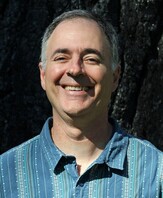 Sneed B. Collard III Connecting Scientists and Kids Tap-tap-tap-tap. Do you ever hear that sound while walking around outside? If you do, you are probably hearing the sound of a woodpecker. More than 200 kinds of woodpeckers are found on Earth and they live on every continent except Australia and Antarctica. They are not only some of our most beautiful birds—they are some of the most important. Woodpeckers are especially adapted to pound, dig, and drill into wood. The main reason? To find food. Ants, beetle grubs, and other insects live under bark and inside dead wood, and woodpeckers have evolved to take advantage of this “food fest.” Woodpecker beaks are super sturdy, and the birds have extra-long, sticky tongues to probe into tiny holes and passageways. A woodpecker’s head has special shock absorbing features that keep the birds from getting brain damage while they are pounding away! As they look for food, woodpeckers are also carving out holes to live in. This helps dozens of other kinds of birds. How? Because many cavity nesting birds need holes in which to sleep and nest, but almost none of these birds can excavate holes for themselves. By drilling holes, woodpeckers are helping bluebirds, house wrens, chickadees, titmice, and many other bird species. Even some mammals and reptiles take advantage of woodpecker holes! About 22 species of woodpeckers live in the US and Canada. The most common is probably the Northern Flicker. Unlike most other woodpeckers, Northern Flickers spend a lot of time on the ground slurping up ants. In spring, they make raucous calls and like to drum on rain gutters, utility poles, and metal chimneys! Most woodpeckers use drumming to attract mates and shout, “This is my territory! Keep out!” Downy Woodpeckers also adapt well to cities and neighborhoods. They are among the smallest woodpeckers and can survive almost anywhere there are trees. Many other woodpeckers live only in certain regions or habitats of the US. Black-backed Woodpeckers live only in burned forests. Golden-fronted Woodpeckers are found mainly in Texas. White-headed Woodpeckers live only in high mountain areas of the West Coast. Wherever you find them, woodpeckers are fun to watch and fascinating to learn about. The next time you see one, stop and observe it for a while. Take a moment to appreciate its behavior and how it makes our world a richer, more interesting place. Woodpeckers are especially adapted to pound, dig, and drill into wood. The main reason? To find food. Ants, beetle grubs, and other insects live under bark and inside dead wood, and woodpeckers have evolved to take advantage of this “food fest.” Woodpecker beaks are super sturdy, and the birds have extra-long, sticky tongues to probe into tiny holes and passageways. A woodpecker’s head has special shock absorbing features that keep the birds from getting brain damage while they are pounding away! As they look for food, woodpeckers are also carving out holes to live in. This helps dozens of other kinds of birds. How? Because many cavity nesting birds need holes in which to sleep and nest, but almost none of these birds can excavate holes for themselves. By drilling holes, woodpeckers are helping bluebirds, house wrens, chickadees, titmice, and many other bird species. Even some mammals and reptiles take advantage of woodpecker holes! About 22 species of woodpeckers live in the US and Canada. The most common is probably the Northern Flicker. Unlike most other woodpeckers, Northern Flickers spend a lot of time on the ground slurping up ants. In spring, they make raucous calls and like to drum on rain gutters, utility poles, and metal chimneys! Most woodpeckers use drumming to attract mates and shout, “This is my territory! Keep out!” Downy Woodpeckers also adapt well to cities and neighborhoods. They are among the smallest woodpeckers and can survive almost anywhere there are trees. Many other woodpeckers live only in certain regions or habitats of the US. Black-backed Woodpeckers live only in burned forests. Golden-fronted Woodpeckers are found mainly in Texas. White-headed Woodpeckers live only in high mountain areas of the West Coast. Wherever you find them, woodpeckers are fun to watch and fascinating to learn about. The next time you see one, stop and observe it for a while. Take a moment to appreciate its behavior and how it makes our world a richer, more interesting place. Upper left: This large Guayaquil Woodpecker from Ecuador looks similar to our Pileated Woodpeckers, but some other South American woodpeckers come in radically different shapes and colors! Upper right: Hairy Woodpeckers are commonly found in forests and can dig deep for a juicy beetle grub! Lower left and right: Northern Flickers and Downey Woodpeckers are probably America's most adaptable woodpeckers and can often be seen in yards and neighborhoods. All photos courtesy of Sneed Collard and Braden Collard 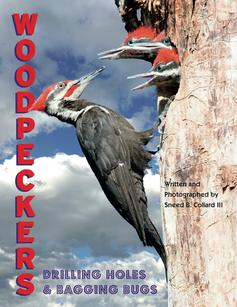 Sneed B. Collard III is the author of more than eighty books for young people, including his newest, Woodpeckers: Drilling Holes and Bagging Bugs, which received a starred review in Booklist magazine. To write the book, he and his son, Braden, spent four years observing and photographing woodpeckers in the wild. They even observed woodpeckers in Ecuador and Peru! Sneed visits schools and gives writing and professional development workshops all around the country. To learn more, visit his website, www.sneedbcollardiii.com. Also follow the blog that he and Braden write at www.fathersonbirding.com. You can read a review by Vicki Cobb here. |
Check out our new podcasts in the iTunes Store and on KidLit Radio.
|












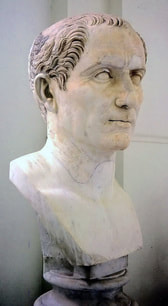
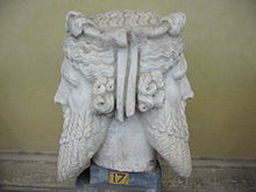

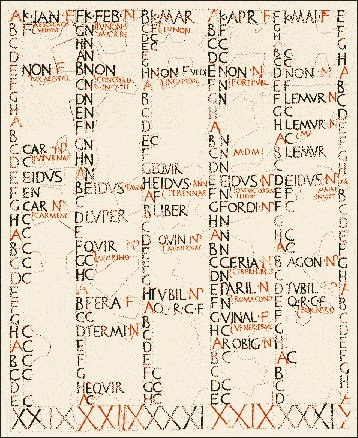
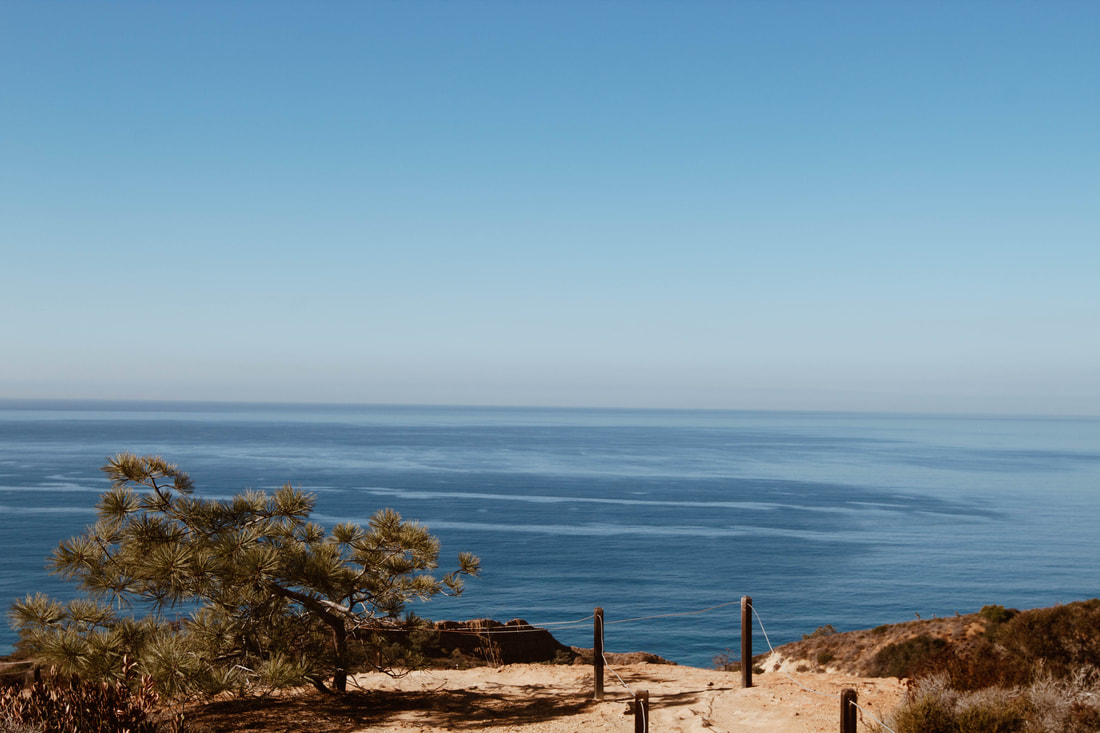
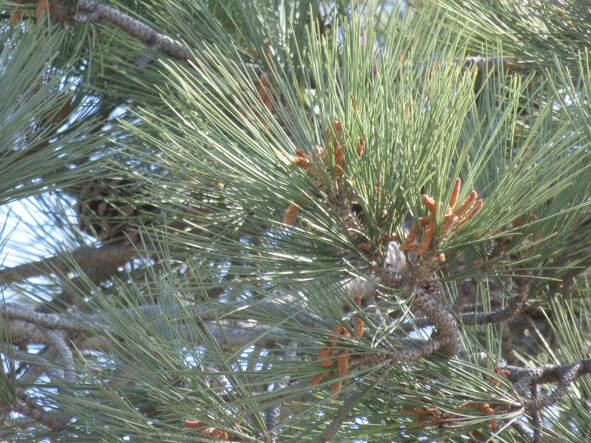
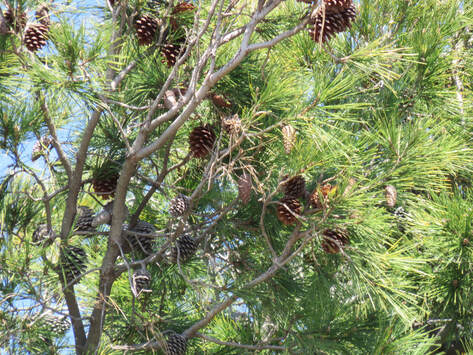
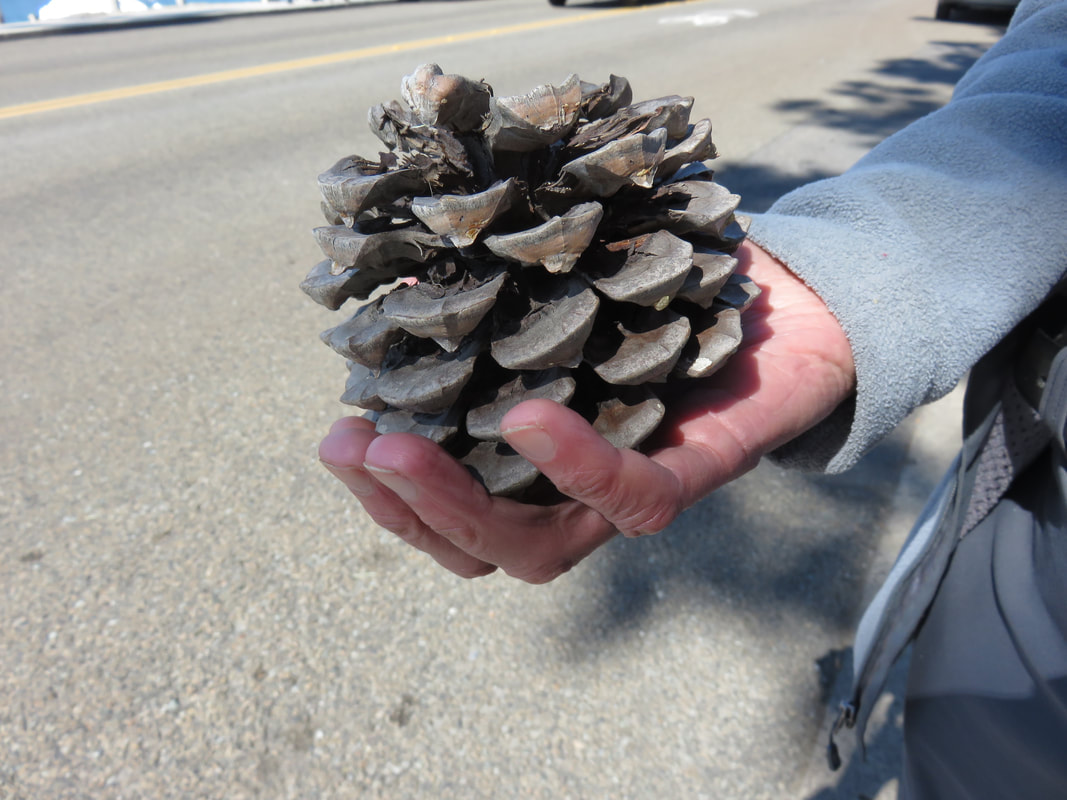
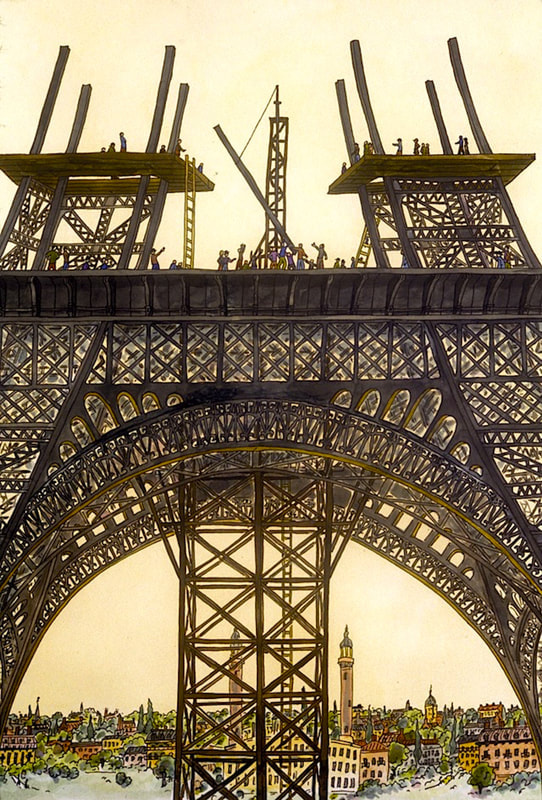
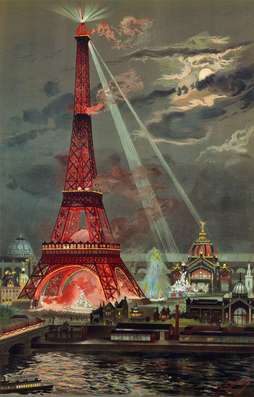
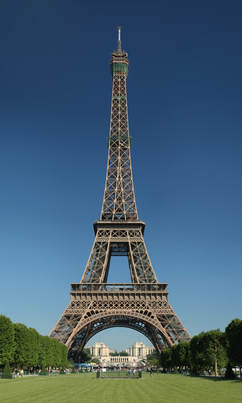
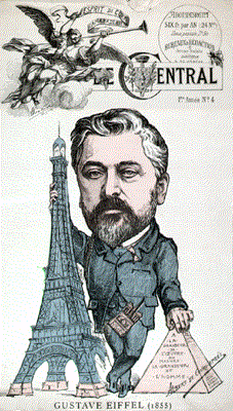



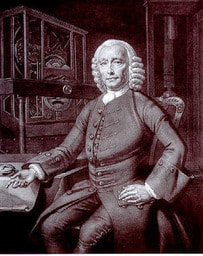
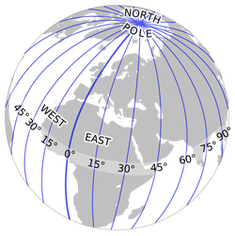
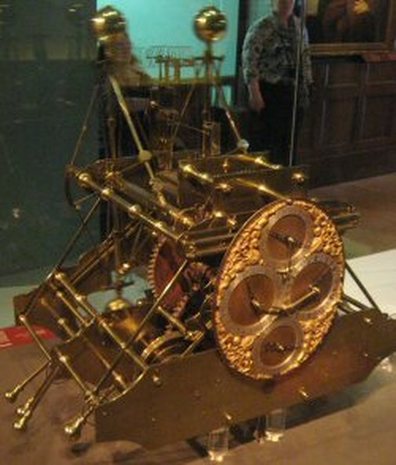
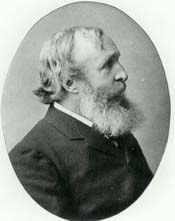





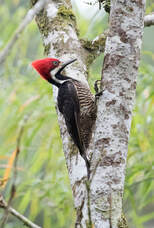

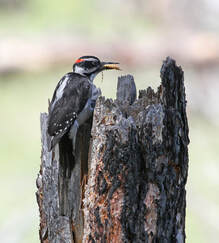
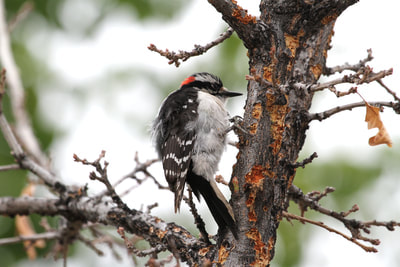
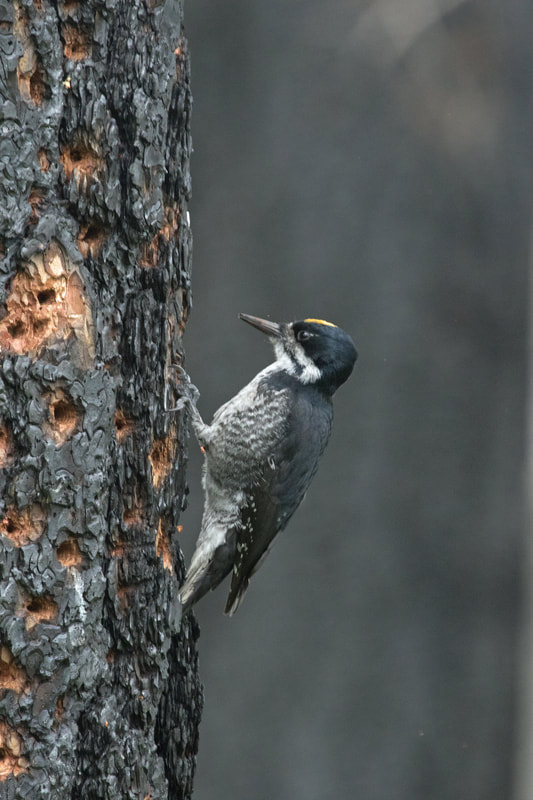
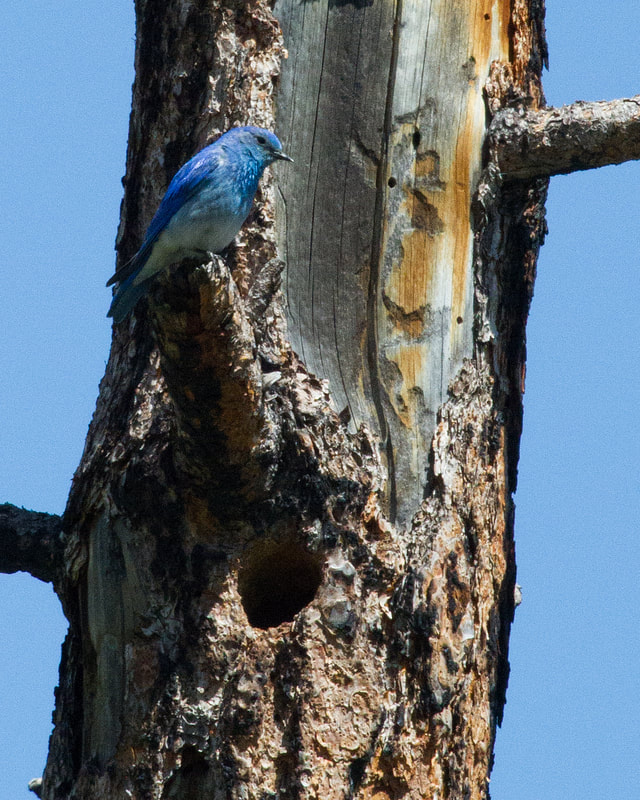
 RSS Feed
RSS Feed
